Follow Lilach

Affiliate marketing in 2023: a step-by-step guide
Wondering how to make money online with affiliate marketing?
Affiliate marketing is one of the most popular – and most effective ways to make money online. For many bloggers, this is in fact one of their main sources of income – with some making tens of thousands of dollars every month just from affiliate sales.
But how does it work, exactly?
Can anyone get started?
And how do you start generating passive income with affiliate marketing?
In this ultimate guide to affiliate marketing, we’ll be covering all of this and much more; here’s a short overview of what you’ll find within this guide:
- What affiliate marketing is and how it works
- How to get started with affiliate marketing
- Best practices to help you maximize your income from affiliate sales
- How to create amazing content that sells
- How to leverage email marketing, blogging and other tactics to generate more affiliate sales
So, if you’re a complete beginner you’ll get to learn how to get started and how to make money from affiliate marketing within the first few months.
If you’re an experienced affiliate marketer, you’ll discover more effective tactics to improve your affiliate strategy and boost your income.
Just click on the links below to jump to your preferred section:
Or, just start reading the whole thing now:
Disclaimer: Some of the links included in this guide are affiliate links on the basis of which I can earn a commission, at no additional cost to you. Please know that any software tools or services I recommend in this article are all tried and tested by me – I would never recommend something that I don’t know for a fact, works.
What is affiliate marketing?
Affiliate marketing is a way to make money online by promoting other people’s or company’s products and services and earning a commission from every sale you help make (to be fair though, there are different types of affiliate programs with different ways of paying marketers, as you’ll see in a minute).
It’s an incredibly popular monetization tactic – and one that can prove to be extremely successful (some affiliate marketers earn hundreds of thousands of $ each month!)
Here’s an easy graphic to help you better understand how affiliate marketing works:
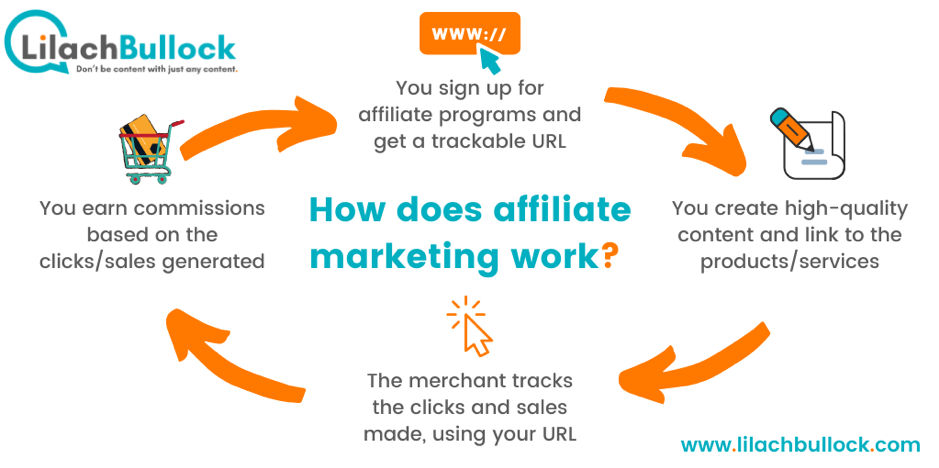
Basically, the principle behind affiliate marketing is quite simple – here’s what the entire process looks like:
- You sign up for affiliate programs for the products and services that are relevant to your target audience and that you can promote organically within your content (it’s always better to promote a product/service that you’re familiar with and most importantly, that you know is of high-quality; otherwise, it could affect your success in the long run); that being said – as you’ll see later – it’s not about promoting just any affiliate links; you need to find products and services that your target audience would genuinely want to buy (otherwise you won’t be earning a commission!)
- Once accepted to the affiliate program, you’ll get a special, trackable link that you’ll have to use whenever you mention the product or service – that way, they’ll be able to track any sales and clicks made via your website/emails/social media/etc. – whichever platform you choose to promote your links
- You create high-quality content where you can promote your affiliate links in an organic way (and helpful for your readers/listeners/viewers/etc.) – this can be anything from blog posts to social media updates and to YouTube videos (among other options, which we’ll get to in a little bit)
- You start earning commissions from every sale made using your trackable URLs – each affiliate program has its own specifications in terms of how much they pay you and how frequently; some have a very straightforward programme that means you get paid a percentage of each sale; others have more complex programs, paying you based on performance and some even paying you a recurring fee for as long as the sale you brought them stays a customer (or at the very least, for the first few years)
How do affiliate marketers get paid?
As I mentioned just before, each affiliate program has its own specifications on how they pay you and what constitutes as a commission; as for how you actually make the money, it depends; however, these are the most popular payment plans for affiliate marketers:
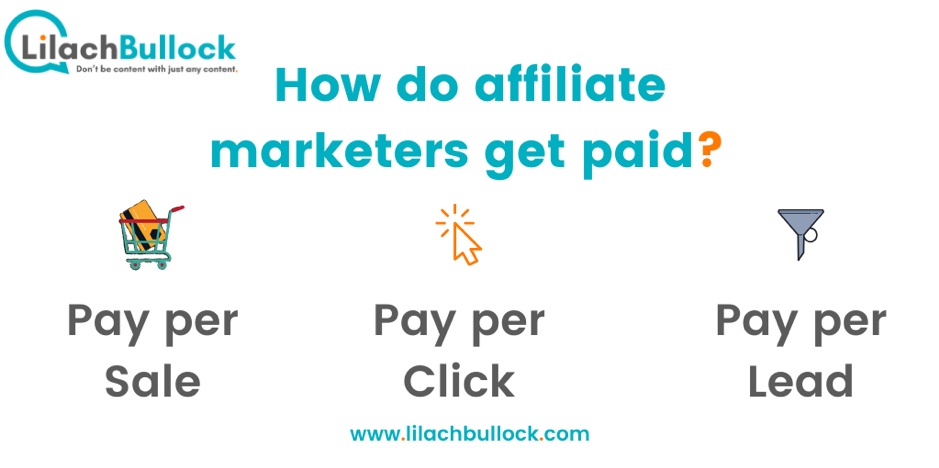
- Pay per sale – this is the most popular form, which basically means that when a visitor who comes from your site buys the product/service, you get paid a percentage of that sale (the percentage differs based on each affiliate program); and with recurring affiliate products, you’ll make a monthly commission as long as that person stays a customer (or for a set period of time)
- Pay per click – as the name suggests, this means that you get paid for the traffic you direct to the merchant’s website – great if you get a lot of traffic already
- Pay per lead – this method requires that you direct people to the merchants’ site and you get paid a commission when the visitor takes a certain action (for example, completing a form or starting a free trial)
Another important distinction between payment models refers to how often you get paid:
- One-off commissions: meaning, you only get paid out once for that particular customers/lead. For example, if one of your readers buys a product using your link, you get paid once, a percentage of that sale
- Recurring programs: recurring programs pay you a recurring fee for the customers you bring to them. For example, let’s say they bought a software; with this payment structure, you’d get a commission every month that they use that software (some programs offer this for as long as that person uses their service/tool, while others limit them to the first few months/years of use)
And finally, there’s the least attractive option for affiliate marketers: when you drive a new sale for the merchant, you pay less for that product or service. However, I didn’t add it to the main list because this is more of a way to save money, rather than make money.
Why affiliate marketing? The benefits of becoming an affiliate marketer
So, why go for affiliate marketing, exactly? And is it the right choice for you?
There are a lot of benefits to making money with affiliate marketing; here are the most notable ones:
- Literally almost anyone can do it – and from the comfort of their own home: while not everyone can make a good living out of it (otherwise, half the population would be selling affiliates!), if you’ve got the drive and you’re willing to put in the work, it doesn’t matter what skills or knowledge you have, what jobs you had in the past and so on – all that you need is a good strategy and the willingness to put in the work!
- You can do it from anywhere in the world – if you love traveling, if you don’t want to keep regular working hours, or you just don’t want to leave your house for work, that’s absolutely fine; all you need is a computer, an Internet connection and you’re good to go – it’s all online and it definitely doesn’t follow a 9 to 5 schedule
- Start-up and monthly costs are minimal: no matter what platform or niche you choose, the start-up costs for affiliate marketing are minimal and even as your business grows, you won’t need to invest too much in it. You’ll likely need website hosting (I recommend Bluehost) and a few software tools at most (most notably, an email marketing tool – I recommend ConvertKit), to start with – but you can easily keep your monthly costs down to a couple hundred dollars a month. That said, once you grow, like with any business, you need to invest back into it to keep it growing; for example, you might consider paying for ads, for freelancers to create more high-value content and so on
- It’s passive income: although it doesn’t mean you won’t have to work a lot (because you will!), it’s still a passive income source. You don’t need to go into work to make money – in fact, you’ll be making money even as you sleep; however, there’s no downplaying the fact that there is a lot of work involved and only those who are willing to do it will get the results they want
There are a lot of benefits to leveraging affiliate marketing – so many, in fact, that you’re probably wondering what you’ve been doing all this time and why you haven’t been doing this instead.
So, now that we’ve got all of the basics out of the way – how exactly do you get started with affiliate marketing?
And most importantly, how do you become a highly successful affiliate marketer?
Read on to find out:
Step 1: Choosing the right niche
Choosing your niche is probably the most important step of the entire process. A good niche – like fashion, beauty and health – means that:
- There’s a large enough audience to target
- The audience has the spending power and the desire to buy these niche products/services
- There are numerous different types of products that you can sell
For example, imagine you had a beauty blog that’s all about make-up (which is a great niche, by the way.)
That means, for starters, that you had a really large audience:
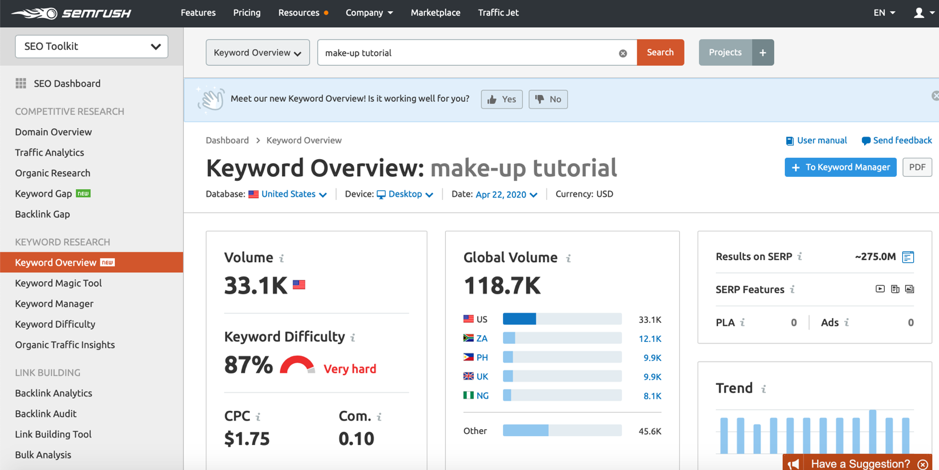
(I use and recommend SEMrush for keyword research – I’ll show you how to leverage it in a bit!)
Approximately 118.7k people search for make-up tutorials online every month. What’s more, they also search for lists of make-up products, such as the best make-up brushes, best make-up primers and many, many more:
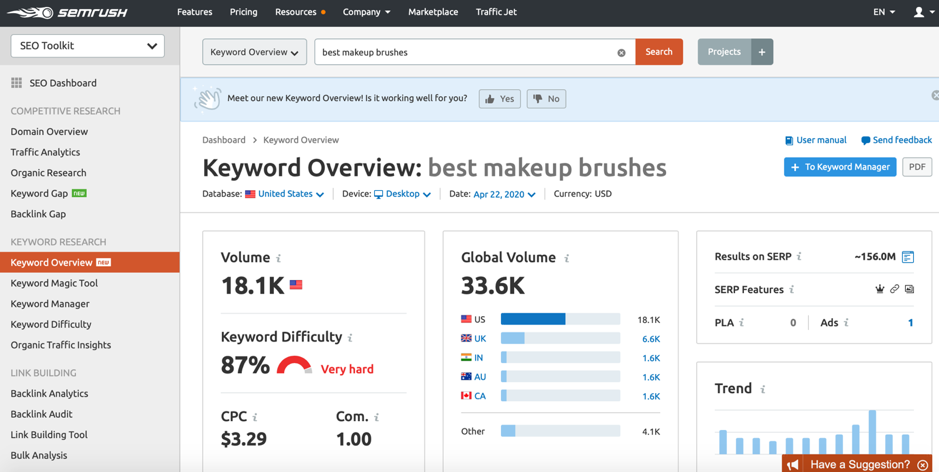
In other words, hundreds of thousands of people search for make-up products every month, looking to buy – and that’s where you come in to guide them and recommend top products that they can use.
And if you’re not into make-up, there are dozens, even hundreds of other niches that you can go for that can be just as lucrative.
However, you shouldn’t rely on your instincts alone – you need to do your research first so that you can pick a niche that you’re not only familiar with, but one that is definitely profitable.
Here’s what to do to help you pick the right niche for you:
- Make a list of your interests, passions, hobbies and skills: ideally, you’ll want to pick a niche that you’re familiar with (and being passionate about it is always a plus – but it’s not a necessity)
- Research search volumes for relevant keywords for each niche (I recommend SEMrush for this – it will also help you boost your SEO so that you can get more organic traffic and therefore, improve your affiliate sales) – this will show you exactly how many people are searching online for these topics and give you a better idea of the audience size, as well as what types of products you can promote to your audience
- Research competitors in each niche – this will help give you an idea of what the potential is for this niche as well as what types of products you can promote: look to see what their traffic is, if they have published any income reports, what affiliate services they’re promoting on their platform
*Here is a list of some of the most popular and most lucrative niches to consider:
- Beauty
- Fashion
- Health & wellness
- Weight loss
- Fitness
- Personal finance
- Investment
- Hobbies
In order to perform keyword research, you need a tool to help; as I mentioned earlier, I use (and recommend!) SEMrush; not only does it have powerful keyword research tools, but it also offers competitive research capabilities (you can see how much traffic any website is getting, for example…) and some very useful link building tools that will help you grow your website and generate more traffic.
Start by making a list of long-tail keywords that you think that particular audience would search for online – you can also use google auto-suggest to give you some ideas:
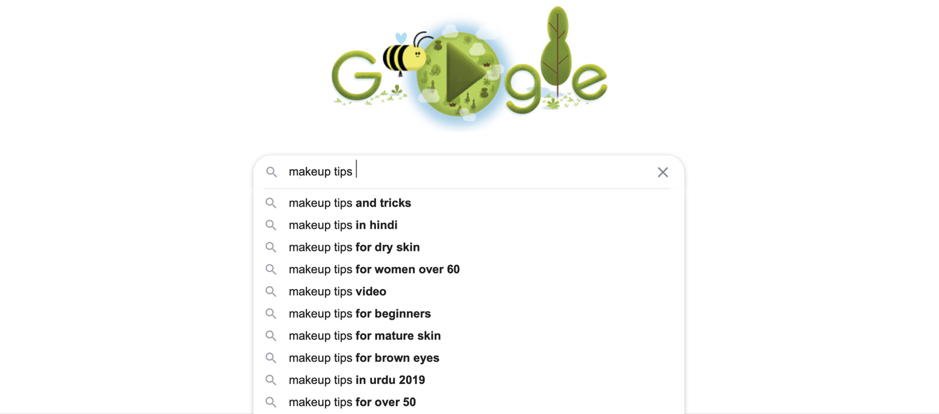
*What are long-tail keywords?
Long-tail keywords are highly specific keyword searches/phrases, formed of at least 3-4 words. For example, “make-up” is a keyword while “how to apply foundation” is a long-tail keyword.
The reason why you should focus your search on long-tail keywords is that they’re highly targeted, meaning that whenever someone searches for a keyword like this, they’re looking for something very specific: whatever it is you’re selling!
This is particularly important if you want to build a niche website or blog where you’ll promote these affiliate products; however, even if you choose another platform – such as Instagram, for example – this is still a very useful exercise as it tells you the potential size and profitability of your chosen niche.
Once you’ve got your list of keywords ready, the next step is to start researching them using SEMrush – open up the keyword research tool, pick the country you want to focus on and see what the monthly search volume is like:
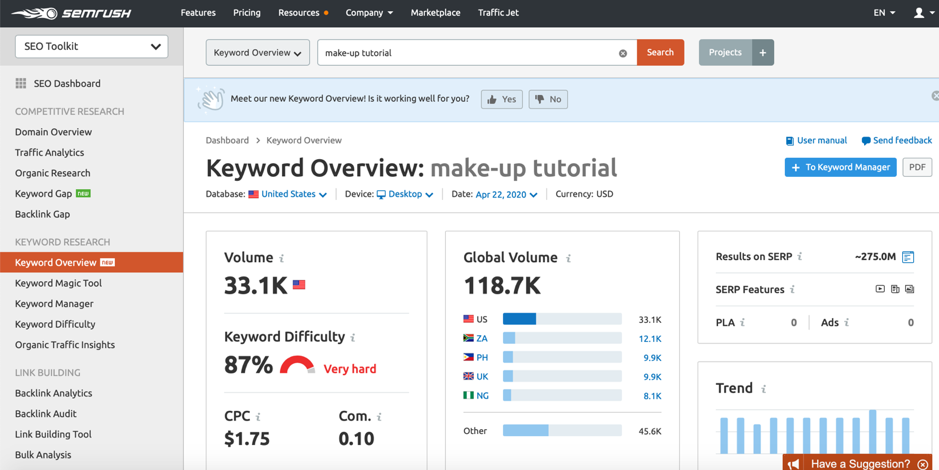
On the left-hand side, you can see the monthly volume for that particular country, while on the right hand-side you can see the total global search volume, together with a top 5 of countries, ordered by search volume.
Then, simply keep repeating this exercise for each keyword in your list and make a note of each one’s search volumes.
Plus, make sure to scroll down so that you can see what other keyword variations there are (together with their search volume), what related keywords you should consider, as well as what questions people ask:
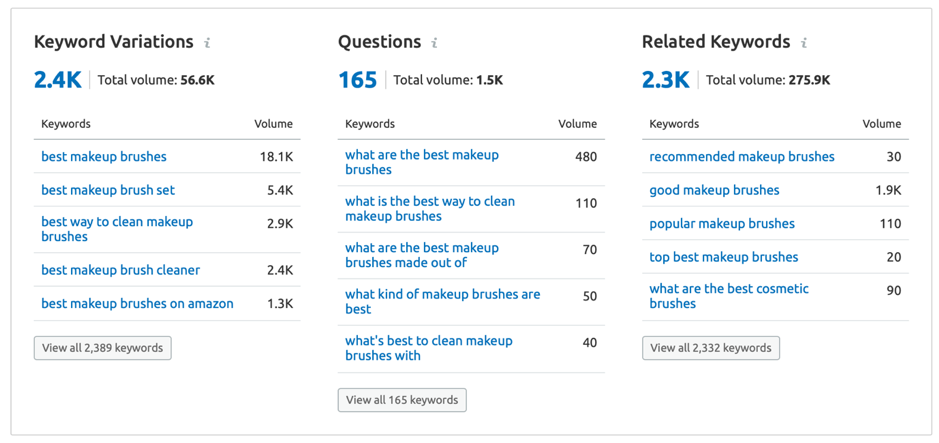
This is a really quick and easy way to gauge the size of an audience, as well as get ideas for content you can create, and products and services you can promote.
Another practical way to research your niche is to look at the other affiliate marketers in that niche to see how they’re performing:
- If they’re bloggers or have a niche website, check out their traffic (you can use SEMrush to look up any website’s traffic) as well as what products and services they promote on their website
- Google “blog income reports” + your keyword to see if there are any income reports available – some bloggers and affiliate marketers publish income reports where they detail how much money they make each month, some showing earnings from each affiliate program
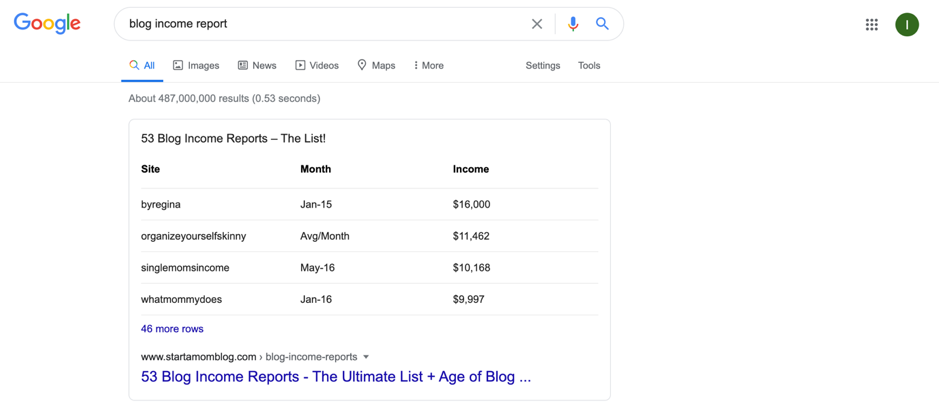
- Check out any relevant podcasts in your niche and check their listenership to see how popular they are; plus, see what affiliate products and services they’re promoting
- Check relevant influencers on social media and their audience size, as well as the products and services they promote
All of this research will help you pick a niche that is truly lucrative – and that is, as I mentioned earlier, essential to your success. If there isn’t an audience that is ready to buy, then you’re likely to fail. But, if you pick a good niche, you’re on the right path to generating a good passive income from affiliate marketing.
Step 2: Choosing the right platform
Once you’ve picked your niche (or even before, if you prefer), you’ll need to decide what channel you’re going to use to grow your brand and promote affiliate products and services.
These are the best platform you can go for:
- Blogging – this is arguably one of the best platforms for affiliate marketing, especially as you’ll also be able to leverage other tactics (social media and email marketing) to sell affiliate products, thus helping you reach a wider audience and consequently, improve your affiliate earnings; then, there’s also the added benefit that there are multiple ways to monetize your blog, which means you can diversify your income streams and keep scaling and growing it. The concept behind blogging are simple: you create amazing content, work on your SEO and traffic, and promote useful products and services where relevant; plus, there are numerous other ways to make money with blogging so if you want to take things even further and increase your revenue and income streams, then this is the perfect platform
- Email marketing – another popular option; you’ll need to work tirelessly to continually grow your subscriber list and use it to deliver valuable content and of course, promote relevant affiliate products and services
- Create a niche website – another option is to create a niche website where you’ll promote affiliate products and services. A niche website is essentially like a blog, only targeting a very specific target audience. For example, instead of being an SEO website, it would be a local SEO website – this type of site can include anything from discussion boards and forums, blog posts, guides and so on
- Run paid ads promoting affiliate products and services – a really easy, quick way to promote affiliate products and services. However, the profit will be lower since you’ll have to invest considerably in advertising
- YouTube – if you love creating videos, this is a great platform for affiliate marketers; you’ll be able to promote your affiliate products in your videos and include links in video descriptions
- Instagram – if you want to become an influencer, this is a great option in terms of the possibilities it brings; however, even though all platforms will take time to build up and there are never any guarantees, becoming an influencer isn’t easy – and it’s definitely time-consuming and a lot of work. Plus, it works better for certain niches, and not so much for others – it’s best for niches such as beauty, health, fitness, weight loss and fashion. It’s important to understand that Instagram success (and social media success, in general) only happens for a few people – that’s why platforms like blogging are much better options, as there are much higher chances of succeeding with blogging
Whichever platform you choose, be aware that you need to disclose the fact that you’re promoting affiliate products (or at least, in most countries).
Out of all these options though, blogging is arguably the most effective one and the one that has the best chances of success early on – plus, literally anyone can start a blog and almost anyone can be successful, but only if they’re willing to put in the time and work.
Apart from blogging, YouTube is probably the next best option – however, creating and editing videos is costlier and more difficult; but, if you like creating videos, it can be just as great an option.
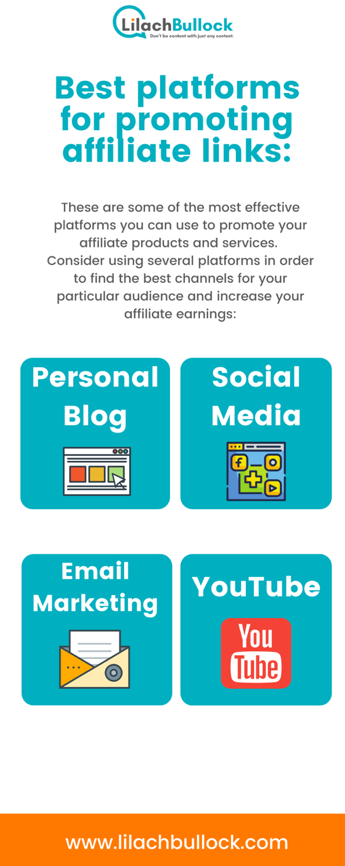
That’s why, in this guide, we’ll be focusing particularly on blogging; however, the strategies are very similar no matter the platform you choose.
And no matter the platform you choose, the next step is to start joining affiliate programs:
Step 3: Join relevant affiliate programs
Now that you know what niche you want to target and the platform you’re going to use, it’s time to join relevant affiliate programs; there are several types or programs, depending on how much you can earn per sale:
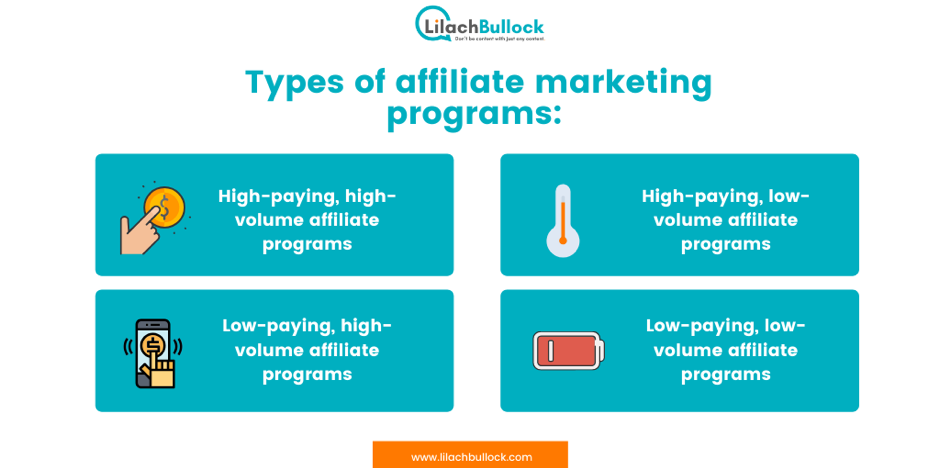
- High-paying, high-volume affiliate programs: these are the best types of programs; they target a large audience (meaning you’ll be able to make a lot of sales) and the affiliate programs also pay a bigger commission per sale
- High-paying, low-volume affiliate programs: these programs pay high commissions per sales, but usually, the sales volume will be quite low (either because the products or services are high-ticket/expensive and/or because they target a smaller audience and therefore, you won’t be able to make too many sales)
- Low-paying, low-volume affiliate programs: these are the least lucrative types of affiliate programs because they don’t pay well – and they don’t sell very well either
- Low-paying, high-volume affiliate programs: some affiliate programs don’t pay very well, but they tend to sell in high volumes; think H&M or Primark – they might not make a high profit for each product they sell, but they make up for it by selling huge volumes of products
Ideally, you should target a combination of different types of programs – focusing on:
- High-paying, high-volume affiliate
- High-paying, low-volume
- Low-paying, high-volume programs
However, your decisions should also depend on the type of audience you’re targeting:
- If you’re targeting businesses, then you should focus on high-paying, low-volume programs. You can make a much bigger profit this way because your target market isn’t that large but they’re willing to spend more money on the product and services they need
- If on the other hand, you’re targeting consumers, then you should focus on low-paying, high-volume programs; that’s because consumers have less money to spend but at the same time, your audience pool is much larger which means you’ll be able to sell high volumes of those products or services
To find relevant affiliate programs, all you need is google – just search for “affiliate programs” or “best affiliate programs” and you’ll find a huge array of lists featuring hundreds of affiliate programs you can join.
Another effective way to find quality affiliate programs for your particular niche is to research other affiliate marketers (especially bloggers):
- Make a list of the top bloggers in your niche
- Look on their blogs to see if they have “income reports” – or google their blog name + “income report” – many affiliate marketers share traffic and income reports for their blog earnings and some will also include the exact affiliate programs that they’ve used (occasionally, they’ll also share how much income they generated for each affiliate program):
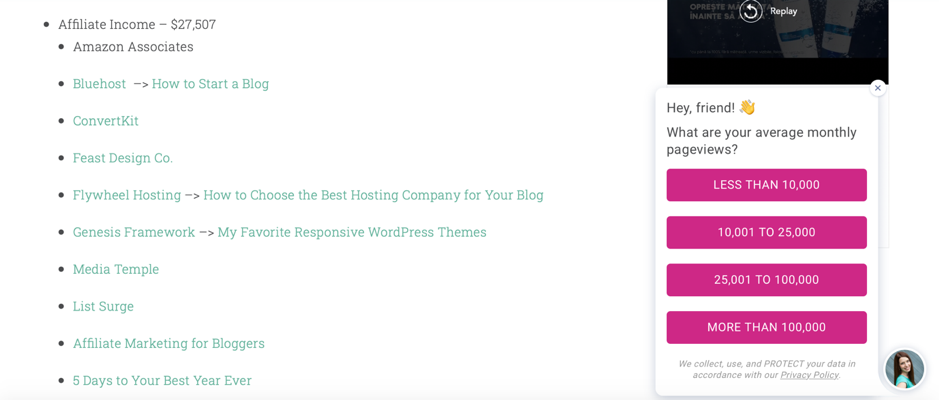
This simple research will help you discover the best affiliate programs you can join in your particular niche, without having to test them yourself.
Remember that it’s not just about getting high-paying programs; you need to go for products and services that you’ve tested yourself and you know are good – otherwise, if you’re promoting products for the potential profit alone, your success as an affiliate marketer will suffer in the long run.
For example, the primary products that I’m promoting are ConvertKit, OptinMonster and SEMrush – and that’s because I’ve been using them for years and honestly believe in them.
So, consider the products and services you’re already using and loving – or any that you’ve used in the past. Then just look them up on google (use “product name + affiliate program”) to see if they have an affiliate program. Alternatively, if it’s sold on Amazon, you could find it via the Amazon Associates affiliate program.
Step 4: Start creating content – and prep your platform
Whatever platform you choose – whether it’s a blog, a YouTube channel, email marketing and so on – before you go live with it, you should first create content to prep for the launch.
After all, the only way to get results from affiliate marketing is to provide truly valuable content where you can promote your affiliate links in an organic way. And you can’t just start with 1 piece of content – even if you can get people to read it, there’s nothing else to keep them on your channel or blog.
So, before you launch, you should have at least 4-5 core pieces of content completely ready; this way, you’re making sure you’re targeting a larger audience with your content, that you have enough content to keep them on your platform for longer and that you have the time to focus on promoting your content and your platform, rather than having to create new content to keep your platform alive.
Here’s what you need to keep in mind when preparing your content:
- Your content needs to target a large audience as you want to reach as many people as possible (and therefore increase your audience and pool and consequently, increase your sales volume)
- Your content is well-researched – particularly when it comes to search engine optimization. This is, as I mentioned before, the best way to promote your content and build up your audience so take the time to properly research keywords (particularly for blogs and YouTube channels) and optimize your content accordingly
- Your content needs to be of high-quality and offer a lot of value to your target audience: research the best keywords to target and write about topics that bring true value – not only that, but make sure that your content is better than your competitors’: that’s how you go up in search engines, how you drive traffic and followers and how you ultimately grow your platform. Plus, if your content isn’t of high quality, your audience won’t have any reason to trust in your product recommendations; consequently, they won’t buy any of the products or services you recommend
- Make sure you include your affiliate links as organically as possible: in order to generate as many affiliate sales as possible, you need to include your affiliate links where they make sense and not just throw them into your content wherever possible. The products and services you promote need to make sense in that context and they need to provide value – otherwise, you simply won’t be generating enough sales
I couldn’t stress this enough: if your content isn’t of high-quality and you’re not including your links in an organic way, you’re not going to be successful. But if you do create quality content and target the right keywords and the right audience, then you’ve got the most important assets you need to be successful as an affiliate marketer.
Here is what you need to know to prepare your content, based on the platform you choose:
Blogging
As I mentioned earlier, blogging is one of the best ways to make money with affiliate marketing.
That’s because:
- You have the potential to reach a huge audience: by leveraging SEO, you can target high-volume keywords with your blog content. As you go up in search results for enough high-volume keywords, you’ll have (at least) tens of thousands of visitors you can rely on every month for organic traffic. What’s more, if you target the right long-tail keywords, that means that you’ll be getting highly target traffic which is, therefore, more likely to convert (i.e. make more affiliate sales)
- There’s a big demand for blog content: just do a few sample google searches – most results you’ll get will be from blogs. This is because this is the best ways to get information and that’s one of the biggest reasons why people go online: because they want information. As a blogger and affiliate marketer, you can create all kinds of valuable content that has huge potential, both for organic traffic and for affiliate sales: how-to guides, listicles and the like (we’ll get to all of them in a bit when I’ll show you what types of blog content to create to help promote your affiliate links)
- There are a plethora of affiliate marketing possibilities: affiliate marketing and blogging work together beautifully – listicles and how-to guides in particular are the perfect mediums for promoting affiliate links in an organic way
- Blogging presents numerous other opportunities to make money online: if you want to extend your income sources in the future and make even more money, blogging presents abundant options for making money online: from creating your own digital (such as an online course) and physical products to selling sponsored content. Check out my guide on how to make money blogging here if you want to learn all the best ways you can make money blogging and diversify your income streams.
- The start-up and monthly costs are minimal: while you will have some monthly costs, it’s very easy to keep them under $100-$200 a month: you’ll need website hosting and an email marketing tool primarily; however, in order to increase your results, you should also invest in a good lead generation tool like OptinMonster and an SEO and keyword research tool like SEMrush (still, your costs will still be quite low, especially when compared to how much you could potentially make from affiliate sales and other blog monetization tactics)
So, yes – blogging really is one of the best mediums for affiliate marketing and, arguably, one of the most effective ways to make money online generally.
If you want to use blogging as your platform, here’s what you need to do:
- Get hosting and a domain name
To start your blog, you first need to get your domain name and hosting – I recommend Bluehost as it’s one the best hosting providers in the world and it features both 1-click WordPress installing and a free domain name.
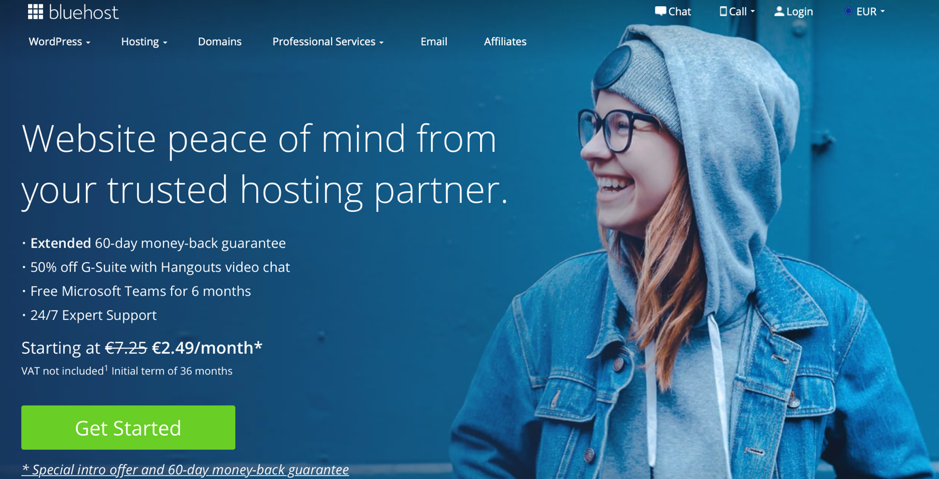
- Build your WordPress blog
WordPress is the most popular CMS (content management system) in the world, and for good reason – it’s incredibly easy to use (literally anyone can build a website with WordPress), there are a plethora of themes and templates you can use to build your website in minutes, and it’s super versatile – use one of the thousands of free and paid plugins available to customize and improve your website exactly as you need to.
- Use a theme to design your blog
As I mentioned just before, designing your WordPress blog is super easy – all you need is a theme.
You can find a huge array of free WordPress themes online; if you want to invest in a better, more professional-looking theme, you can use ElegantThemes (which is what I’ve been using for my websites for yours). They offer hundreds of templates that you can use to design your website, as well as a built-in visual website builder that’s super easy to use, Divi.
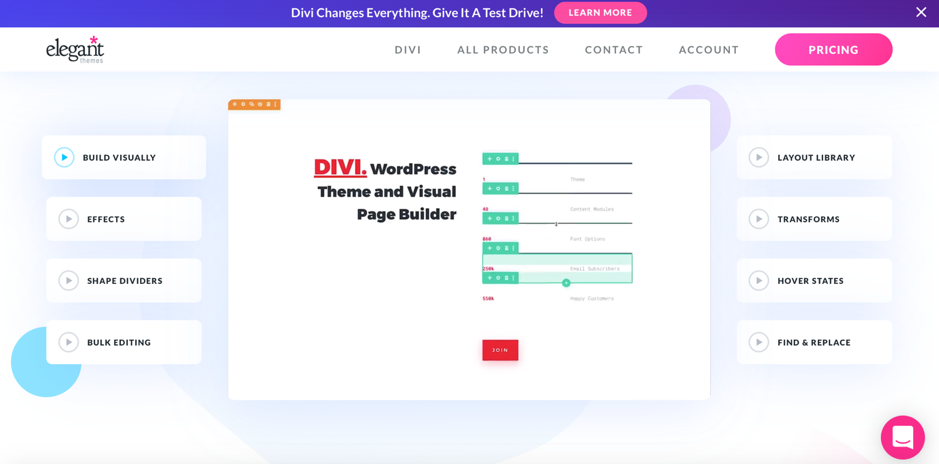
Don’t forget to head over to my guide on how to start a blog here for clear, in-depth step-by-step instructions on how to design and build a blog that makes money.
- Creating content for your blog: getting ready for launch
Now we’re getting to the main bit: how to prep your blog for launch with great content.
As you’ve seen earlier on, one of the biggest benefits of using blogging as your platform is that you have the potential to reach a huge audience with your content. And if you reach a big (and targeted) audience with your content, then you’ll make more affiliate sales.
The only way to get all of this valuable traffic is to write SEO-optimized content that targets the right keywords.
And this is one of the big reasons why you should invest in an SEO and keyword research tool like SEMrush – which is what I use for my blog.
The first thing you’ll need to do is research keywords to target with your content; here’s what to keep in mind about your keywords:
- Focus on long-tail keywords – long-tail keywords are phrases formed of 3-4 (or more) words; for example, “how to start a blog” or “best make-up brushes” are long-tail keywords. Because they’re so specific, that means that the traffic you get from them will be more likely to buy and therefore, increase your affiliate earnings
- Go for high-volume keywords: if 3 or 4 of your blog posts can get top rankings on first page search results for high-volume keywords, that means you’ll get amazing organic traffic; for example, if your blog post was the first result that appeared for “best makeup brushes” then you’d likely get at least 30% of the 33.6k people that search for these keywords every month. Add that up with a few more blog posts that target other keywords that generate upwards of 50k-100k searches per month, and you’ll have over 100k blog visitors coming to your site every month
- Focus on keywords that allow you to sell: listicles and how-to blog posts are perfect for including affiliate links in your content in an organic way; plus, there’s also the added bonus that listicles and how-to’s are the most popular types of content so you’ll have a bigger chance of going up in search results and of generating more traffic from other platforms as well (such as social media)
- Pay attention to the keyword difficulty: for some keywords, it’s very difficult to get on the first (or even the first few) pages of search results. That’s because there already are top publications on the first few pages and their content is of really high quality too (think Forbes, The Next Web and other top publications like that). It’s not to say that it’s impossible to overcome them, but for some really popular keywords, it will be considerably difficult. You’ll not only need to create content that’s better than what’s already out there, but you’ll also need to get a lot of traffic to that blog post and a lot of backlinks linking back to your blog (these are signals that search engines use to decide how to rank a page or content.
To do your research, all you need is a tool like SEMrush; as I’ve shown you earlier as well, you can look up any keyword to see what the search volume is by country, as well as worldwide:
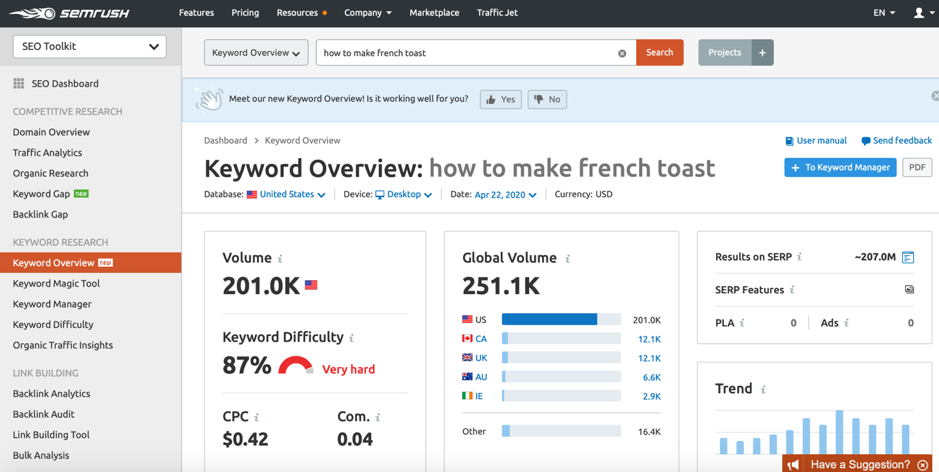
Beyond this, it will also show you keyword variations, related questions and other suggested keywords:
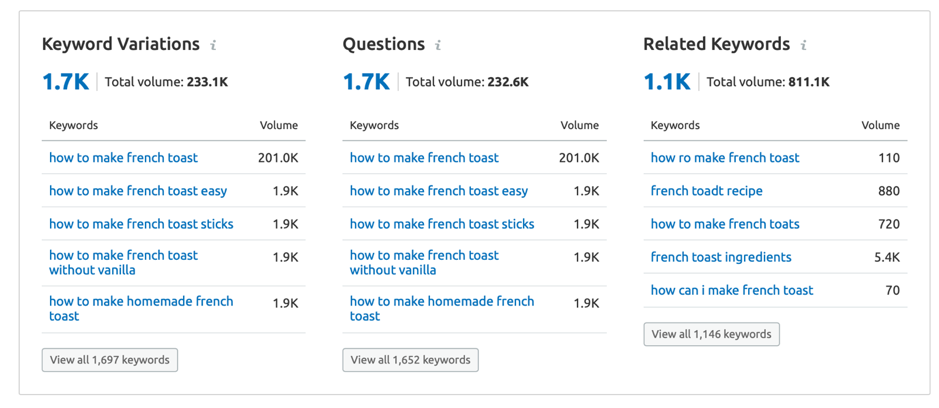
This is very useful as it will help you come up with different ideas for keywords to target and content to create.
So, before you go live with your blog, create at least 4-5 piece of content that target high-volume keywords. Then, keep updating your content regularly; as for generating traffic, we’ll be discussing traffic tactics a little later on in this guide.
YouTube
Prepping your content for YouTube is actually a pretty similar process to blogging. That’s because people often use YouTube just like they use Google – they search for long-tail keywords (most of the time) to find relevant videos.
Consequently, YouTube is actually the second most popular search engine around (after, of course, Google).
Not to mention, video results also appear in Google – so if you target the right keywords and optimize your YouTube videos for search engines, you’ll have a bigger chance of appearing in YouTube (and Google) search results and therefore, generate more views, more subscribers and more affiliate sales.
So, just like with blogging, you’ll need to create targeted, high-quality content that provides value to your audience. The only differences are that you’ll create video content instead of blog posts – and that you’ll use the video description space to promote your affiliate links.
In other words, your videos will need to:
- Target high-volume search keywords
- Be optimized for the YouTube search engine (such as adding tags and a keyword-rich description)
- Offer real value to your target audience
- Talk about the affiliate products and services that you’re promoting during your video, and make sure to mention that the link is available in the video description (you need people to actually click on that link in order to make your sales commissions)
- Add your affiliate link/s in the video description, while also including a quick explanation of what they get by clicking on each link (as well as any special offers, if applicable)
Like with blogging just before, you should prepare some content ahead of going live – I would recommend at least 5-10 videos to start with. That’ because creating videos can be more time-consuming and it’s essential to publish new content often to grow your subscribers as well as attract new ones.
Email marketing
Another popular platform for affiliate marketers is email – you collect emails and then send your subscribers regular emails with valuable content, while including your affiliate links where relevant.
Here’s what the process looks like and what you need to do to get started:
Create a landing page to start collecting subscribers
Before you can start getting people’s email addresses, you need a webpage where people can come and sign up.
This is super easy to do and will literally take you a few minutes (although you should spend a little longer than that on putting together your landing page messaging):
- Get hosting from Bluehost here (and a free domain name)
- Build the landing page where you’ll collect emails, using a tool like ConverKit; it’s built with non-programmers/designers in mind so it truly easy very easy to use, no matter what your experience level is. Plus, there are numerous different templates you can use so all you really need to do is pick the template you like the most and customize with your colours, fonts, visuals and messaging. But the best part is that it’s also an email marketing and lead capture tool – so it’s really the only tool you’ll need to start and manage your email marketing:
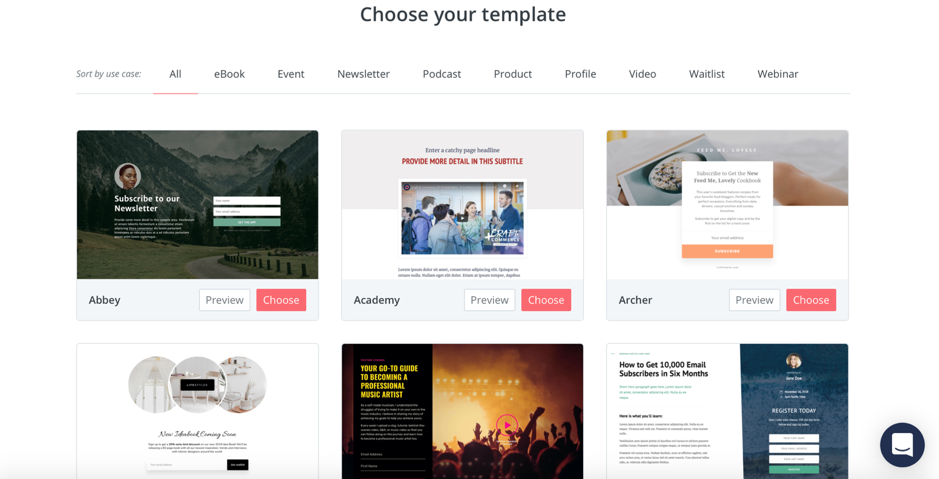
- Add messaging to your landing page: keep things short and sweet – simply explain what people will get if they subscribe to your email list and what the benefits are for them. If you’re not confident in your sales copywriting skills, it might be worth investing in getting a professional to help – you can easily find talented copywriters on freelancer sites like Fiverr and there usually is a pretty fast turnaround time as well
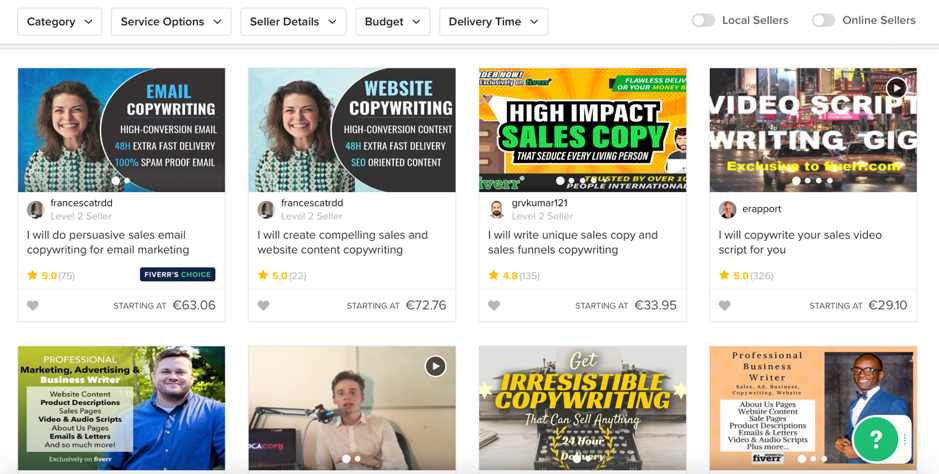
- Add a lead capture form to your landing page: don’t ask for too much information as some people might be put off by being asked too many questions and not sign up as a consequence; usually, asking for their first name and email is enough for affiliate marketing purposes
Create a welcome email series for all new subscribers
In order to send emails to your subscribers automatically, you’re going to need an email marketing tool.
I use and recommend ConvertKit; I’ve been using it for years and although I’ve tried multiple other tools over the last 10+ years, I always come back to it because it’s so easy to use and set up – and I’ve never run into any problems with it.
Plus, as I mentioned just before, ConvertKit is not just an email marketing tool, but also a landing page builder – and it also allows you to add lead capture forms to your landing page.
In other words, it’s pretty much the only tool you need to manage your new business.
But let’s go back to the welcome series.
When someone signs up for your subscriber list, they should receive a few ‘welcome’ emails, sent automatically and at set intervals (this is something that you can set up easily in ConvertKit); here are some tips on what to include in your welcome emails:
- The first email should largely focus on you and what your project is all about: who are you and why should your subscribers care about you/your opinions and suggestions? What will the emails you send them comprise of? What kinds of emails will you be sending them and how frequently?
- Focus first on building trust with your subscribers: don’t sell too much in the beginning but rather, focus on sending them really high-quality content so that your subscribers will grow to trust you and your recommendations
- Don’t forget to include an affiliate disclosure as well, so that your subscribers know you’re going to promote affiliate links (this is required by law)
Sign up for my email course below to learn more:
A few more tips for affiliate email marketing:
- Send new emails regularly and keep top-of-mind for your subscribers
- Use A/B testing to test different subject lines and even different emails to see how it affects your click-through rates
- Segment your list – as you learn more about your subscribers, segment them into different categories (you can easily create new segments with ConvertKit) so that you can then send them personalized emails and therefore increase your open and click-through rates. For example, if you see that some subscribers only open your emails when they talk about a particular topic, then you could create a new segment just for them and send them highly personalized emails that focus on that specific topic
- Offer value and place your affiliate links in an organic way – people are only going to keep opening and reading your emails if you offer them real value. Don’t send them content just because it fits with the products you want to create; rather, create valuable content first and then add relevant affiliate links where it makes sense.
Step 5: Drive traffic and subscribers
In order to start making sales with affiliate marketing, you first need to get people to your content. Whether you’re building a blog, a YouTube channel or using any other platform, this is an essential step.
While driving traffic is something that you’ll need to do continuously, the biggest struggle is when you’re just starting out and you have no traffic and have no idea where to start.
So, what can you do to generate traffic and/or subscribers? Let’s go through each platform in turn:
1) Driving traffic to your blog
With blogging, your biggest focus should be on SEO: this is how you drive tens of thousands of targeted visitors to your website (and even more as you start to grow your blog) and how you increase your affiliate sales.
That means that you’ll need to:
- Research high-volume keywords to target with your blog content (aka focus keywords) using SEMrush – as I showed you earlier
- Use the focus keyword throughout your blog posts; include it in your: headline, SEO title, meta description, in H2 headlines and throughout your blog post, where relevant. You can use an SEO plugin like SEOPressor to help you optimize your blog posts, especially if you’re not that familiar with SEO
- Focus on quality: Google is smarter than ever and it looks for high-quality content only; while keywords and optimization are extremely important, if your content isn’t high-quality, then your optimization efforts won’t count for much
If you’re not that familiar with SEO, it’s worth investing in an online course to learn more; as I’ve mentioned a few times throughout this guide, this is the best way to promote your blog and make more affiliate sales.
That being said, you’ll also need to employ other tactics as well to help drive more traffic to your blog; here are some of the best tactics to consider:
- Guest blogging: this is another must-do: it will help raise your profile in your niche, boost your traffic and help you generate backlinks for your blog (which are essential for SEO and will help you boost your search rankings) – you should ideally try to guest post for at least 10-15 publications each month, a mix of both high-tier publications (publications with a domain authority of at least 80-85) and mid-tier publications (with a domain authority of 20-30 and up to 80)
- Social media: add social sharing buttons to your blog (I use and recommend the SocialWarfare plugin) and create profiles on all major channels where you know your audience is (Facebook, Twitter, Instagram and so on) – plus, make sure to share your blog posts regularly (not just once, but multiple times a week)
- Blogger and influencer communities: join relevant blogging communities in your niche to share your blog posts and have other bloggers share them out with their own audiences (and therefore, drive more traffic to your blog as well)
- Paid ads: if you want to speed up the process, you can leverage online ads to drive some quick traffic (on social media and Google)
Another highly effective way to drive traffic to your blog and get people to come back for more is to build up an email list; this is something that you should start with as soon as your blog goes live as you don’t want to miss any opportunity to get new subscribers.
That’s because your email list will not only help you get more traffic and repeat visitors, but it also provides you with another way to promote your affiliate links and make more money.
Here’s what to do:
- Get ConvertKit to manage your email subscribers and send them regular emails (scheduled email broadcasts, automated email sequences of multiple emails, and automated emails based on your subscriber’s actions)
- Create an amazing lead magnet: give your blog readers a better reason to sign up for your email list by providing them with an attractive lead magnet – this is a piece of content (or several) that provides real value to your audience: an e-book, how-to guides, checklists and templates and so on
- Get OptinMonster to create lead capture forms, add exit intent and pop-ups to drive subscriptions – I’ve been using OptinMonster for years now as they’re the best in the biz: you can use their templates to create all kinds of email opt-in and pop-up forms, as well as leverage exit intent (which is a technology that can identify the moment when a visitor is about to leave a website and targets them with a personalize pop-up window to remind them to sign up before they leave):
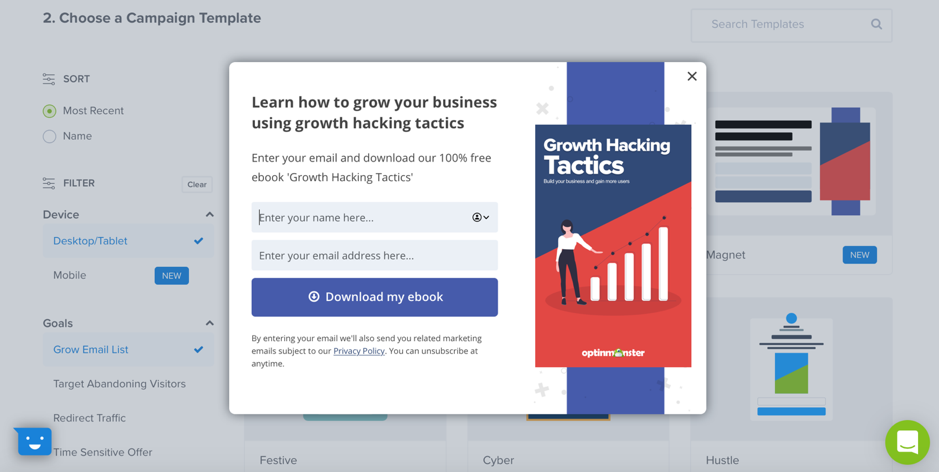
Remember to get started with email marketing as soon as possible – it will help both with your traffic and with your sales.
2) Getting subscribers and viewers for your YouTube channel
In order to get results from your YouTube channel and start selling your affiliates, you need to:
- Get views for your videos
- Get YouTube subscribers for your channel in order to boost your views
You’ll only start to see good results from your YouTube channel once you start to generate tens of thousands of views on your videos – not everyone who sees your videos will actually buy the products you’re selling, so unless you have a large following, you won’t be able to make too much money. But, if you manage to grow your viewership and especially, get enough subscribers, it can be a very lucrative platform for your affiliate marketing efforts.
Here are some tips to help you generate more views and subscribers:
- Optimize your videos for SEO: do some keyword research, find out what people want to learn more about in your niche, and create videos based on those topics. Plus, make sure to optimize your videos for the YouTube search engine by adding relevant tags and optimizing your video description; not only does this help with your rankings but it will also tell you YouTube when to suggest your videos (when people turn on auto-suggest and leave their YouTube on, YouTube will keep playing related videos)
- Use the End Screen to promote your other videos: get viewers to watch more of your videos by promoting your other related videos on End Screens (the final shot that usually appears at the end of a video and links to other videos)
- Promote your YouTube channel on other social media: join other social networks, build up your profiles and promote your videos and your YouTube channel to drive more views and subscriptions
- Focus on your branding: create an eye-catching preview of your video, watermark your videos and create a killer channel tagline and a channel icon – branding is super important to building up your brand and influence and creating a recognizable name and channel
- Guest blogging: use guest blogging to promote your channel and get links back to your videos (and where possible, embed your videos in the actual guest post) – you can get my guest blogging toolkit here for 5,000+ blogs that accept guest posts, in 35+ categories (you might find a lot of lists like this online but I guarantee you won’t find one that’s as up-to-date as this one!)
Growing your YouTube channel and viewership will take considerable time and effort; that means that you’ll need to spend a lot of time not only creating beautiful and highly-targeted videos but also on promoting your videos and channel.
It’s worth investing in a few online courses as well in order to learn the best ways to create a channel that gets results; you can find a plethora of quality courses on Udemy:
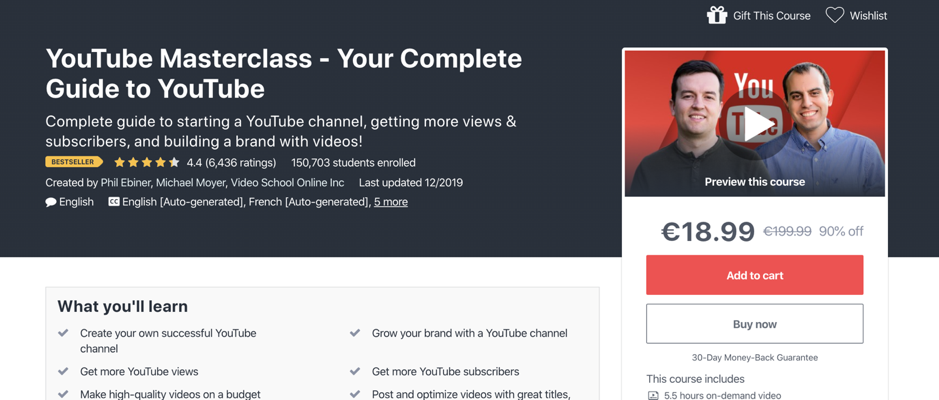
And if you want to learn more tactics on how to grow your channel with YouTube marketing and SEO, use Udemy to find a course to help. Here is a list of a couple of specific affiliate marketing courses that can help grow your affiliate revenue (on Youtube and outside).
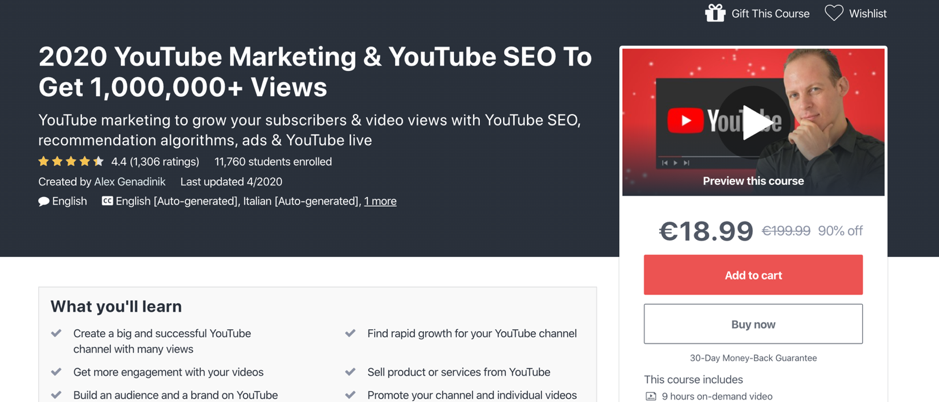
3) Getting subscribers for your email list
How do you get subscribers for your email list, especially when you’re just starting out?
Like with blogging and YouTube, you’ll need a large pool of subscribers before you’ll be able to generate enough affiliate sales.
Follow these tips to help you get more email subscribers:
- Offer a lead magnet in return: one of the easiest, most practical ways to entice people to join an email list is to offer them something of value in return; i.e. a lead magnet. This is a piece of content that appeals to a large proportion of your audience and that offers them a lot of value; this could be: an e-book, a how-to guide, a listicle, a checklist, a swipe file, a template etc. (or a combination of these). For example, a food and cooking email marketer might offer an e-book with quick & easy 15-minute meals, while a financial expert might offer a personal finance checklist
- Guest blogging: once again, guest blogging is a highly effective way to promote yourself and drive traffic to your landing page. Get my guest blogging toolkit here to get started (there are over 5,000 different blogs that accept guest posts in over 35+ different categories)
- Keep your form as simple as possible: just one extra field in your subscription form can have a huge (negative) impact on your subscription rate. Keep things simple and only ask for essential information: first name and email is usually more than enough for affiliate marketing purposes (and in fact, you could easily just ask for their email)
- Work on your sales messaging: your landing page should make it very clear why people should sign up for your email list. If you’re not giving them enough incentives to get them excited and want to join, then they won’t – so put yourself in their shoes: would you sign up for your email list? What exactly do you get in return? Consider getting a pro sales copywriter from Fiverr to help with your sales messaging if you’re not confident in your abilities
4) Getting followers for your Instagram account
Instagram can be the perfect platform for certain blog niches, particularly health, beauty, fitness, fashion and food/cooking. If you’re targeting a different niche, then Instagram is probably not the best platform for you (go for blogging, YouTube or email marketing instead – those work with pretty much any niche!)
Like with all other platforms, you’ll need to grow your audience in order to see results.
Here’s how to grow your Instagram account and get more followers:
- Create a posting schedule: post new updates as often as possible, preferably multiple times a day and using a mix of different types of updates (photos, Stories, videos, etc.) The more active you are, the better your chances of growing your audience and your engagement on this platform. Make sure however that your content is of high quality – if you’re posting updates just for the sake of it, it won’t get you very far
- Use hashtags wisely: Include 5-10 hashtags on each of your posts but first do your research: how many people are actually using those hashtags? And are those people part of your target audience? Don’t just go for hashtags that get millions or tens of millions of searches however – it will difficult to get noticed amidst all those posts. Additionally, stay on top of any relevant trending hashtags and create content that permits you to use them
- Engage, engage, engage: don’t just post new content but take the time to engage with other users by following them, liking and commenting on their stuff, responding to any comments you get and so on
Step 6: Start promoting your affiliate links
As your platform of choice grows and you get enough traffic/followers/subscribers, you’ll be able to start making money from affiliate sales.
It’s important to understand that it won’t happen overnight and in fact, it will take at least a few months before you start to make a good living from affiliate marketing.
And it’s not just putting in time that will lead to your success, but also:
- The quality of your content
- The time and effort you put into driving up your traffic and subscriber numbers
- Your affiliate marketing strategy and the tactics you use
- The quality of the affiliate programs you join
So don’t expect results to happen overnight – it’s a lengthy, time-consuming process and only those who put in the time and the work required will make it. Otherwise, the Internet would be filled with successful affiliate marketers left and right.
Now that we’ve got that out of the way, let’s talk strategy: how should you promote your affiliate links in order to generate a good income from affiliate marketing?
First, remember to focus on:
- High-paying, high-volume affiliate programs
- High-paying, low-volume affiliate programs (particularly great if you have an audience formed of businesses because they can afford to pay more – but the audience will be smaller
- Low-paying, high-volume affiliate programs (perfect for a consumer market as they don’t have as much money to spend but the audience pool is much bigger at the same time)
Make sure to sign up for numerous programs – as you start to grow your platform and make more sales, you’ll also get to learn which programs work best for your particular audience.
Now, let’s go through each different platform and how you can best leverage them to boost your affiliate marketing income:
Step 7: Make money with affiliate marketing and blogging
I’ve probably said this a few times already throughout this guide, but it’s worth saying again: blogging is probably the best and easiest way to make money online with affiliate marketing.
It’s easier to grow a blog – especially if you invest in SEO – than other platforms and the potential is huge; not to mention, there are numerous other ways to make money online with blogging.
Plus, there are so many different ways to promote affiliate links in an organic way, if you have a blog; and the potential is huge:
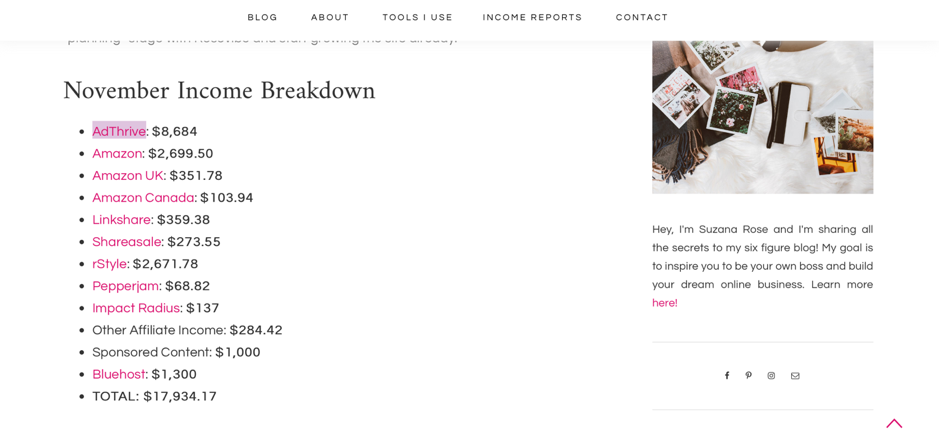
Blog income report example from Suzana Rose
Blog income report example from Suzana Rose
Don’t forget that in order to generate great results from your blog, you’ll need to:
- Constantly promote your blog and keep growing your traffic
- Target relevant, high-volume keywords with your content in order to drive targeted, organic traffic
- Create super high-quality content (always strive to be better than the rest!) – and by the way, if you’re struggling with creating content or simply want to focus on other tasks, you can outsource your content creation here
Another very useful tip that I want to share with you is that you should focus on creating evergreen content.
This is content that stays relevant for long periods of time (even forever in some cases), with minimal changes and updates made throughout the years. The reasons why it’s better to create evergreen content are that:
- Evergreen content has a better chance of ranking high up in search results (especially because evergreen content gets more backlinks and it stays relevant for longer)
- You won’t need to create as much content: instead of constantly having to create new content to boost your affiliate earnings, you can focus on a few evergreen pieces of content that target high-volume keywords and therefore, will drive new organic traffic to your blog constantly (along with boosting your affiliate sales at the same time!)
Here are the best strategies you can use to grow your blog’s affiliate earnings:
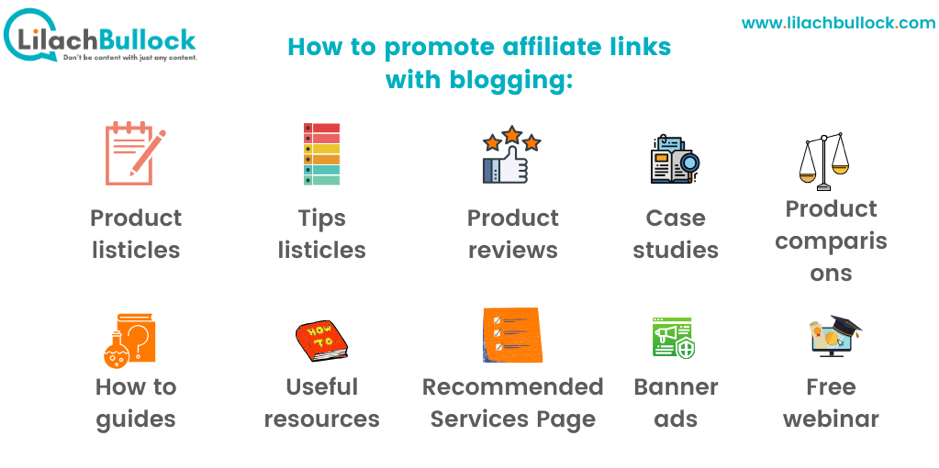
Product listicles
Listicles are one of the most popular content formats around.
And even better yet, they’re the perfect opportunity for promoting your affiliate links.
People often search for lists when they’re researching products or trying to find something specific; for example, “best webinar software” or “best makeup brushes” – and that presents the ideal opportunity to promote your affiliate links.
Research keywords to see what types of product listicles people look and create listicles accordingly; this will help you generate more organic traffic and therefore, more affiliate sales
Tips listicles
Another way to leverage the popularity of listicles is with “useful tips”- type listicles. These are just as sought-after online and even though they might not focus on products primarily, that doesn’t mean you won’t have a lot of opportunities to include your affiliate links throughout.
How exactly do you do that? It’s very simple: when you share your tips, you can easily recommend products and services that help your readers implement that tip.
For example, if you wrote a blog post on “10 tips to stay healthy” then you could recommend a plethora of products throughout the article, where relevant such as healthy drinks and foods, cooking utensils, health books and many more.
Product reviews
With product reviews, you focus on a single product to promote – which makes it the ideal option for high-volume products that target a large audience.
With this type of content, you’ll be able to go into a lot of detail about the product and really get into the benefits of using it.
Ideally, you should only create product reviews for products that have the potential to sell in high volume; even better if a lot of people are searching for reviews of that specific product (once again, use SEMrush to perform your keyword research). Otherwise, you’ll be spending too much time creating content that won’t result in enough sales.
Case studies
Another way to highlight a specific product, is with case studies – which, like with product reviews, means that you should use case studies for the products and services that sell in high volumes so that you don’t spend all of this time creating content for a product that barely sells.
Case studies are particularly well-suited for software tools; however, you can also create case studies of other types of products as well, showing users what you’ve achieved using them and what results they too can expect.
Remember to add lots of visuals to your case studies, such as screenshots and photos/video documenting your experience using that product and the results you received.
Product comparisons
When making a decision to buy a new product, people will often look for product comparisons to see which is the best option they should go for; for example:
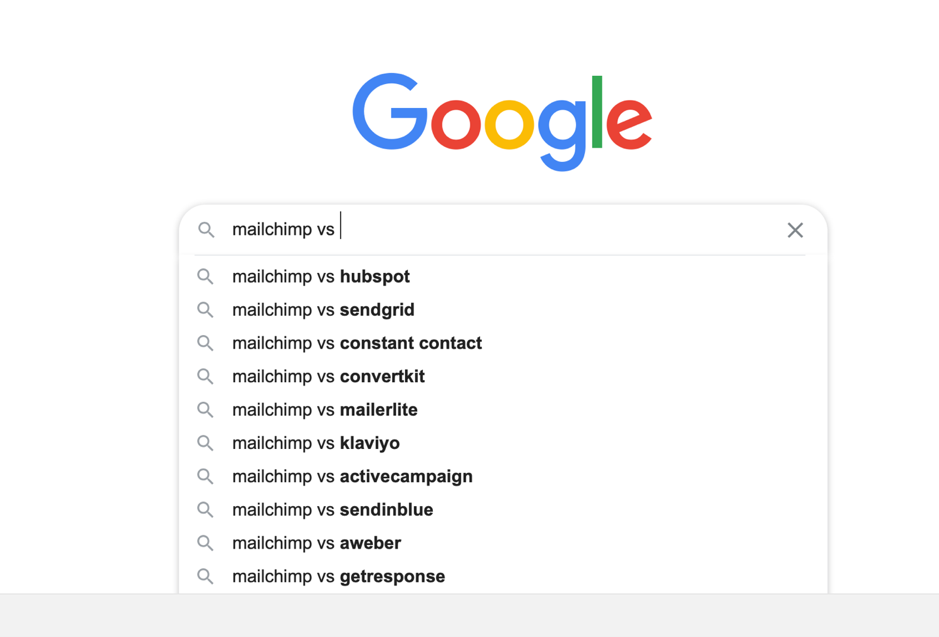
This too allows you to go into more detail and even allow you to promote two different products at the same time.
How to guides
Next to listicles, how to guides are probably the most popular types of blog posts. However, while most of the previous types of blog posts focused primarily on products/services (which makes it very easy to insert your affiliate links organically), with how to guides you’ll need to use a different strategy – similar to tips listicles.
Basically, whenever you show your readers how to do something, you can also provide them with useful product and service recommendations – it’s that simple.
Create valuable resources
Another way to promote your affiliate links is with useful resources that provide a lot of value; for example:
- Checklists: for example, if you had an SEO blog you could create something like a “SEO blog writing checklist” and promote any relevant tools that would help your readers improve their SEO results
- E-books: write short e-books (30-40k words) that allow you to cover a subject in-depth; like with how-to guides, you’ll be able to include relevant affiliate links throughout your e-book, by recommending quality products and services based on the tips and advice you’re offering
Recommended products/services page
Once you’ve started to establish yourself as a thought leader and trust-worthy source in your niche, people will turn to you for tips and recommendations.
To capitalize on this, create a page on your blog where you list out all your recommended products and/or services that are relevant to your target audience.
For example, if you had a finance blog, then you might create a list of recommended finance software tools; or, if you had a food blog, you could list out all of your favourite cooking books, kitchen utensils and so on.
No matter what niche you’re in, there’s definitely at least one category of products and services that you can promote. And this way, your blog visitors will be able to quickly check out your “recommended products” page to discover new products.
Make sure to include:
- The affiliate link
- A short description of the product/service
- The benefits of getting that product/service
- Why exactly you’re recommending each product/service (i.e. why you love it)
Banner ads on your blog
Another way to promote your affiliate links on your blog is with a simple banner ad linking directly to the affiliate.
To create your banner, you can use Canva to help:
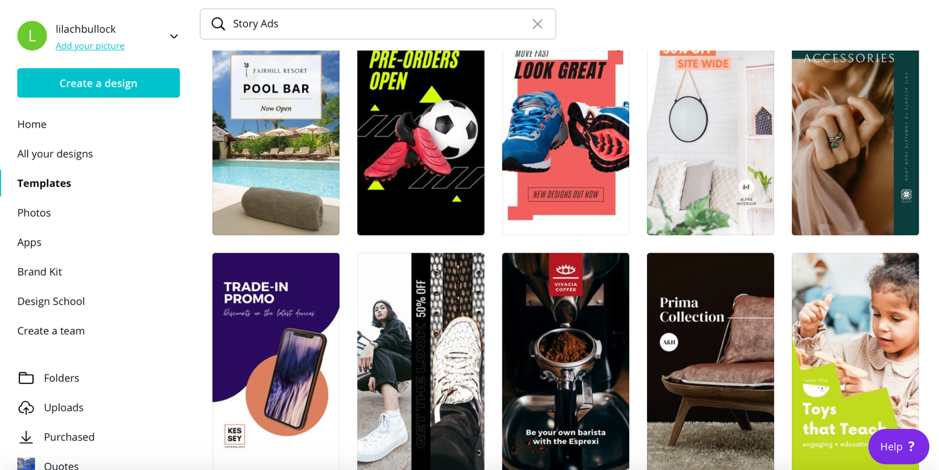
You’ll find a huge array of templates that you can use and they are super easy to customize (anyone can do it!)
Then, all you’ll have to do is to add your ad on your website and link back to the affiliate product of choice; make sure it’s somewhere visible, where a majority of your visitors can see it. For example, you could consider the sidebar of your blog for your ad.
Make sure that any product you promote like this is something that tends to sell in high volumes. There’s no point in using up that space if most of your visitors have no interest in that product (or no money to pay for it).
Hold a free webinar
Webinars are a great way to promote affiliate links – you’re offering your audience something of value (i.e. whatever you teach them/show them in your webinar) and during the webinar (as well as afterwards), you can promote different products and services that will help your viewers achieve the results they want.
Creating and setting up a webinar is super easy; all you need is a tool like WebinarJam.
Once you’ve created your recording and prepped all the content you’ll need for your webinar, you’ll simply use WebinarJam to host your webinar, schedule and automate it, build a landing page for it and even to email people to sign up for your webinar or to simply remind them to join.
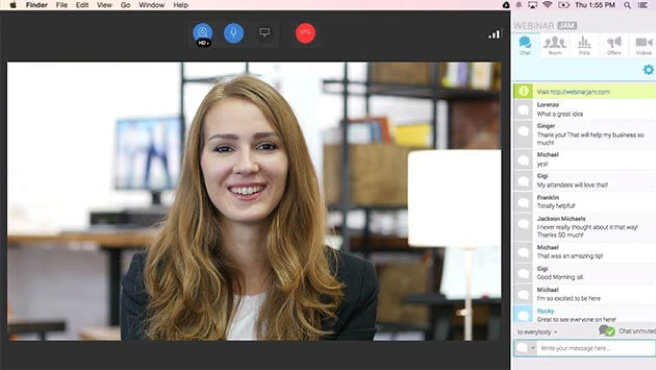
You need a tool like this because it’s much more reliable than a free web conferencing tool (particularly in terms of the quality of the transmission, both sound and video) and because you also get all the extra features that you need in order to run a successful webinar: a space for questions and answers, a waiting room, the ability to make announcements and of course, the tools you need to promote your webinar and drive up the attendance.
Plus, it allows you to have up to 5,000 attendees and still get HD video and sound.
As to how to make the most out of your webinar and ensure you get amazing results, here are some very important tips to remember:
- Spend a lot of time promoting your webinar: you need to drive up attendance to your webinar, otherwise it won’t be worth it in the end. Make sure you leverage all of your channels to promote your webinar as much as possible: email, social media, your blog, YouTube channel and so on
- Remember that most people sign up on the day: the most important day is the day of the webinar so you need to give a big promotional push that day. Not only that, but set up an email sequence to send your registrants on the day: that morning, to give them a gentle reminder and at the very least once right before the webinar starts – about 5 minutes before
- Offer value first: people aren’t going to buy anything from you (or based on your advice) if you’re not offering them value. This is how you build up trust and show them that you have the knowledge and the skills – and therefore, worth the trust
- It’s not just about the webinar: remember that you’ll be able to promote your affiliate links even after the webinar, not just during. You can send your webinar list follow-up emails providing them with more information, more value and more resources – which gives you a great opportunity to promote your affiliate links
Email marketing
While so far, we’ve talked about different types of blog posts you can create and how you can add your links in, email marketing is a completely different strategy but one that’s very closely related to blogging.
As I’ve mentioned before in this guide, one of the first things you should do as soon as you start your blog is to start growing your email list; this is because:
- It helps boost loyalty amongst your readers
- It helps you generate more traffic/get more returning visitors (which might otherwise never come back to your website or completely forget about your blog)
- And it’s another highly effective way to promote your affiliate links
Read the next section to find out more about how to make money with affiliate email marketing:
Making money with affiliate email marketing
While so far, we’ve talked about different types of blog posts you can create and how you can add your links in, email marketing is a completely different strategy but one that’s very closely related to blogging.
As I’ve mentioned before in this guide, one of the first things you should do as soon as you start your blog is to start growing your email list; this is because:
- It helps boost loyalty amongst your readers
- It helps you generate more traffic/get more returning visitors (which might otherwise never come back to your website or completely forget about your blog)
- And it’s another highly effective way to promote your affiliate links
We’ve already talked about how to get subscribers for your email list, but what are the best strategies for making money with affiliate marketing?
Remember to:
- Get a good email marketing tool so that you can not only send one-off broadcasts, but also so that you can set up automated email sequences; I recommend ConvertKit (as I mentioned before, it’s a tool that I’ve been using for at least 6 years now, if not more!)
- Start slow: ease your new subscribers into it by sending them a series of welcome emails where you explain who you are, what they’ll be getting as your subscribers and preferably, offer them something of value to hook them (for example, a free e-book, a checklist, a template and so on)
- Offer a lead magnet to entice subscribers: in order to get more subscribers (especially when you’re just starting out with email marketing) it’s best to offer a lead magnet to give people a reason to sign up for your list. This could be an e-book, an extensive how to guide a checklist or template – basically, anything that can offer a lot of value to your target audience (people are more likely to sign up for a list when they also get something in return)
- Don’t be a salesperson: remember that you’re not working for the companies you’re promoting – you’re not their salesperson. I say this because it’s easy to slip into becoming very sales-focused which can really damage your results with affiliate marketing. Talking about these products should come organically and naturally – you’re a customer who is happy with the product and helping to spread the word about it; you’re not a salesperson
- Write amazing email subject lines: your subscribers get a lot of emails in their inboxes – if your subject line doesn’t attract their attention, they probably won’t open your emails at all. What’s more, if you use (what are considered to be) spam words in your subject line, your email will likely end up in the spam/promotions folder. Try to experiment with different subject lines to find out what gets people to open your emails – you can A/B test 2 different subject lines with ConvertKit:
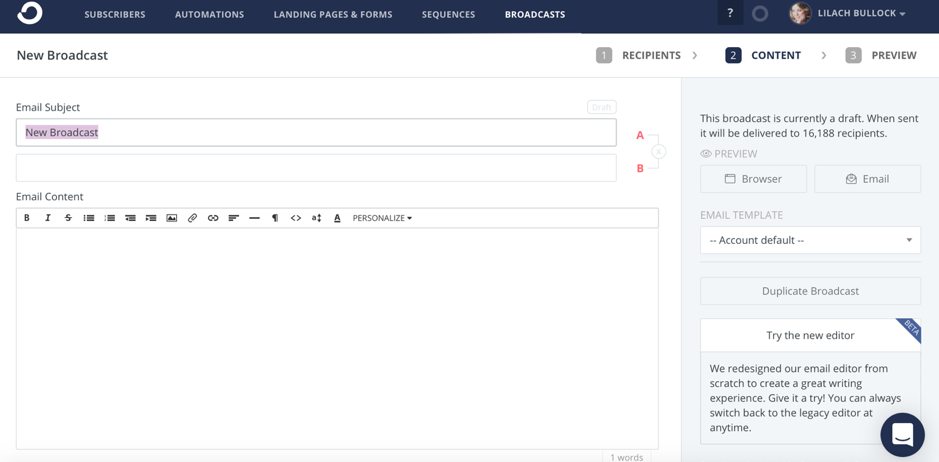
The tool will automatically send both your subject lines, equally, to 30% of your list; then, once it finds out which subject lines performs best (i.e. gets the most email opens) it will send that subject line to the rest of your list.
Here’s how to start making money with email affiliate marketing:
Welcome email series
As mentioned earlier, the first thing you should send your new subscribers is a “welcome” email series – a series of 2-3 emails which you can easily set up with ConvertKit:
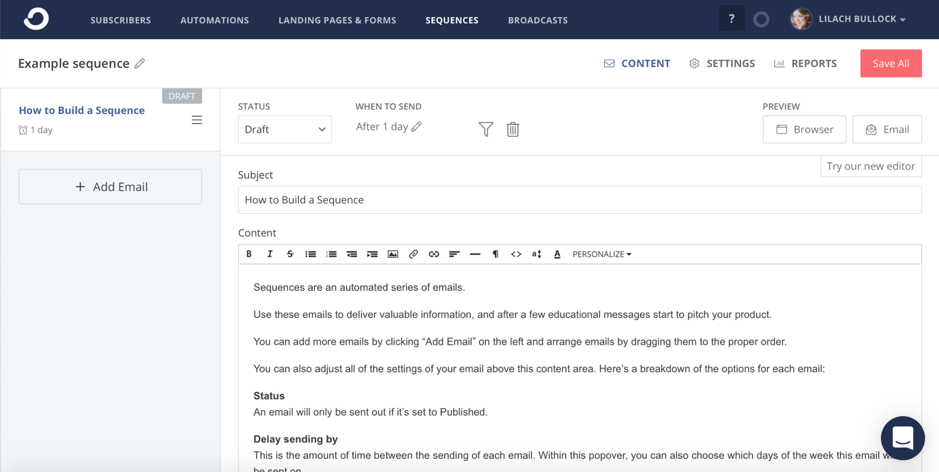
In order to build your email sequence, all you have to do is write the subject and content of your email (you can also personalize your emails so that you can address your subscribers by their first name).
Then, click on Add Email to add your next email and click on “when to send” to set when to send the follow-up email:
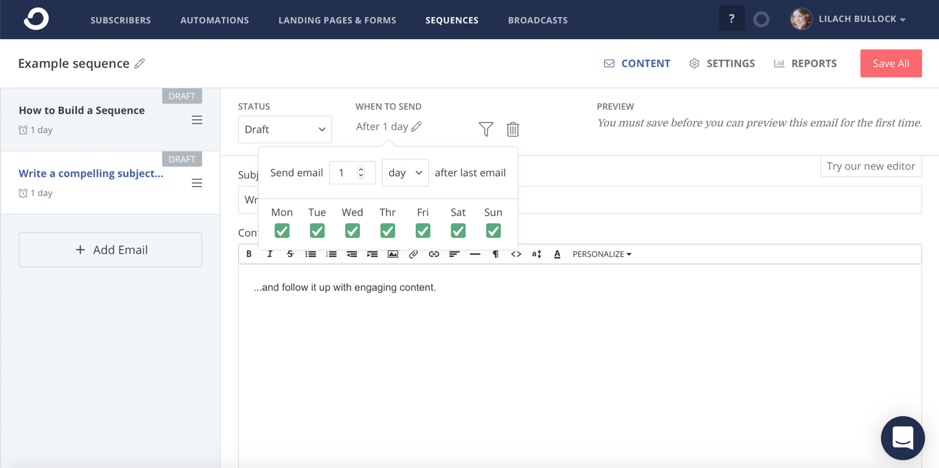
To complete your email series, just add as many emails as you want to your sequence – and you’re good to go.
Here’s what you can include in your welcome email series:
- The first email (sent immediately after signing up for your list, unless you also need to send them a lead magnet first – in that case, schedule the first email to be sent a few minutes after you email them the freebie): introduce yourself and tell your new subscribers why they should get excited about your email subscription service; plus, give them any relevant details as well, such as how often you’re going to email them and what your emails will contain
- Second email (sent the same day, immediately after the first email, or the next day at the latest): give your new subscribers a freebie – something that provides a lot of value (an e-book, checklist, template and so on); this is so that you can boost trust with your new subscribers and make them want to open your upcoming emails too
- Third email (this one is optional, though): if you want to get your subscribers even more excited and boost their trust in you, you could send them a third email a couple of days later, providing them with even more value. It could be another freebie or it could be another email with a personal story, for example
When you’re just starting out with email marketing, it’s best not to sell in the first few emails. That’s, quite simply, because people don’t yet know you or trust you – they have no reason to buy a product or service based on your recommendations. That’s why you start slow with the first couple of emails (sent in the first few days of them signing up for your list) so that you can establish rapport and build trust – then, with the upcoming emails, you’ll be able to start selling your affiliate links.
Create an email course
One of the best ways to offer value to your list and promote your affiliate links in an organic way is through an email course. This is essentially a how-to guide in email form, sent out in multiple emails – and by the way, it’s also a great incentive to get people to sign up to your list if they get a guide in return.
And, just like with how-to guides, this format allows you to promote all kinds of affiliate products and services in an organic way: you show people how to do something and then you recommend them the products and/or services they need in order to achieve those results.
To set up an email course, the process is very similar to setting up the welcome email series: all you need is an email marketing tool like ConvertKit to set up a sequence. Since you’re sending them a course on the same topic, it’s a good idea to send an email every day – each email can be anywhere from a few hundred words to a few thousand.
To set up your email sequence in ConvertKit, all you need to do is write the content for each email and decide when to send each one:

Send solo email broadcasts
You can also send a single email to your list – not a full sequence of multiple emails. These types of emails are commonly known as broadcasts; basically, you write the content, you schedule the time when you want to send your broadcast and you’re done.
This is super easy to do and set up in ConvertKit; just click on Broadcasts to create a new one:
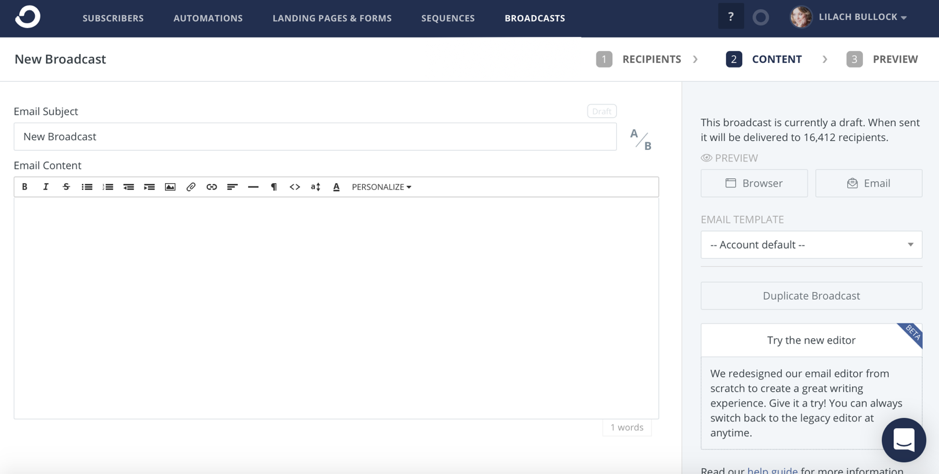
Here, you’ll write a subject line and the content of your email, schedule it and send it out.
When sending solo email broadcasts, you have several options to promote your affiliate links:
- Promote a single link/product: you can focus on a specific topic and only promote one product throughout your broadcast
- Send a round-up: use your broadcast to send a round-up of useful products or services that are relevant to your audience
- Promote a special offer: if you have a great affiliate offer, this is a great platform for promoting it directly to your audience
Segment your list and send personalized emails and email sequences
One of the really useful things you can do with ConvertKit is that you can tag all of the links you include in your emails. This way, you’ll know whenever your subscribers click on them and take action.
What’s more, you can also segment your list; this means you can create multiple lists based on your subscribers’ behaviour (such as the forms they subscribed to and the links they clicked from your older emails).
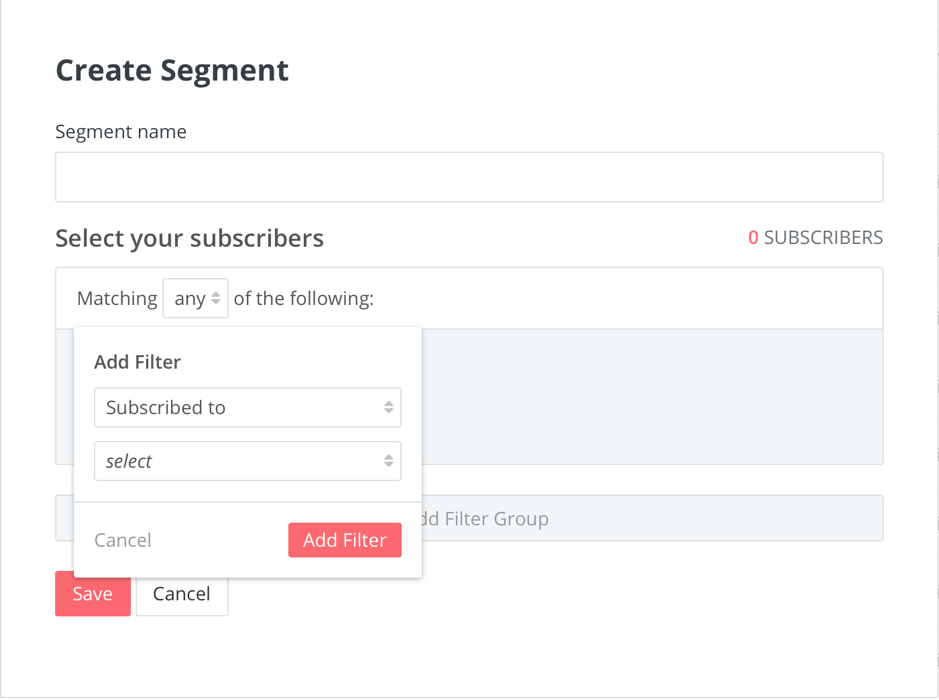
And this is very useful because it allows you to create highly personalized campaigns to your list and therefore, increase your open rates and your click-through rates.
That’s because people are much more likely to open an email from you and take action, if the email in question is truly relevant to them.
Once you start to gather more data about your email subscribers, make sure to leverage it to its full potential:
- Find out what topics interest your audience: which emails gets the highest open-rates and so on
- What products and services they’re most interested in: this shows you what types of products and services you should be promoting in order to improve your results
And most importantly, send them more personalized emails and increase your conversion rates and affiliate earnings in the process.
Affiliate marketing on YouTube: how to make money with YouTube affiliate marketing
YouTube is one of the largest, most popular sites in the world; in fact, it’s also the second most popular search engine in the world.
But how do you leverage this platform to make money with affiliate marketing?
Here are some very important tips to remember before we get to the actual strategies:
- Invest in YouTube search engine optimization: take the time to learn how it works, research the best keywords and optimize your videos for search engines – YouTube is a search engine of itself so in order to provide your videos as suggestions to viewers, it needs to understand what your video is about. By improving your rankings in search results, you’ll also improve your views and of course, your affiliate sales. Plus, this also how you get in the right auto-play playlists too!
- Plan your content in advance: it can take some time to come up with ideas and create videos so make sure to take the time to plan your content in advance. This means not just coming up with your idea for the idea, but also planning the length, the affiliates you’ll promote, and even creating a loose script for the video
- Don’t be too salesy: this is something that’s important across the board, no matter the platform you choose, but with video, it’s easy to become too salesy – so promote your products and services, but try not to overdo it (people don’t really like being sold to!)
And now, here’s how to start making money with affiliate marketing on YouTube and how to promote your affiliate links:
Product reviews
One of the easiest ways to promote an affiliate link is with a product review. This is simply a video of you trying a product or service and sharing your thoughts about it – with the link included in your video description.
You’ve already seen a ton of these videos on YouTube; they’re super popular because it’s such an easy way to see a review and see how the product works:
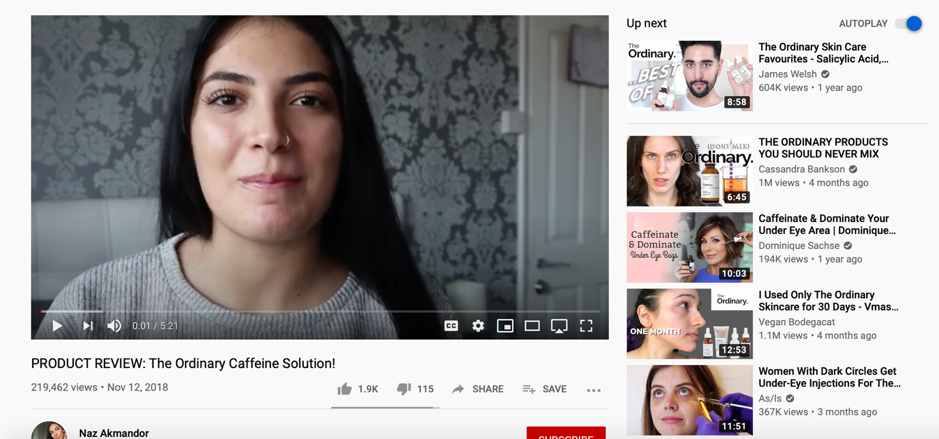
When you get started, it’s a good idea to review products that have a large audience; this way, you’ll be getting more views from search.
Product listicles
As you might’ve already noticed, the strategies and types of content you can use for YouTube are pretty much the same as with blogging – only, of course, it’s in video format.
Another very popular type of video – and one that’s perfect for promoting affiliate links – is the listicle video.
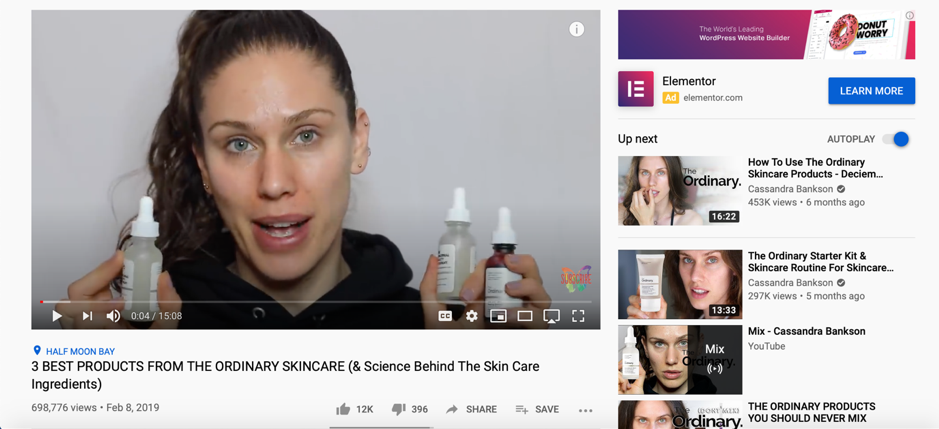
With this format, you can essentially promote multiple affiliate products and links.
Product comparisons
Product comparisons are super popular on YouTube – ConvertKit vs. MailChimp or iPad vs. Kindle for reading books, and so on – and they’re also great for promoting affiliate links.
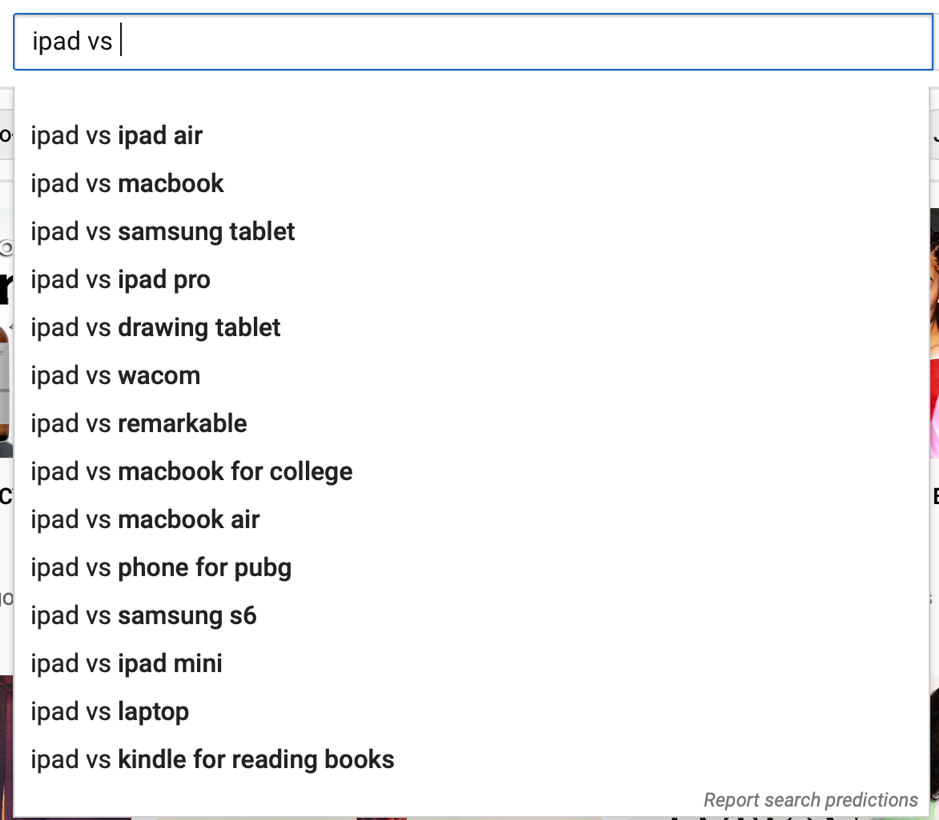
Like with product reviews, they allow you to go into great detail about each product or service and really explain the pros and the cons of using each product so that you can convince people to buy the product they want, using your affiliate link.
How to videos
How to videos are incredibly popular – just like with how to blog posts. People actively search for them to help them learn and show them how to do stuff: from how to build stuff to how to edit and pretty much any other topic you can think of. Basically, if you could write a blog post about it, then you can also create a video about it.
And, just like with how to blog posts, this format allows you to easily promote different products and services as solutions to help your viewers do what you’re showing them.
For example, let’s say you created a how-to video on how to get started with email marketing; this allows you to promote all kinds of products organically in your video, such as your favourite email marketing tool, landing page builders, content creation tools and any other tools and software that would be relevant.
Conclusion
If you’re interested in making money online and building a successful online business, affiliate marketing is probably one of your best bets. Not only can anyone become an affiliate marketer but it also has huge potential for scalability; not to mention, you can literally work from anywhere in the world.
If you’re not sure where to get started with affiliate marketing, use this guide to help you along the way, from picking a profitable niche to picking your ideal platform and to learning how exactly you can earn an income from affiliate marketing.

Follow Lilach














